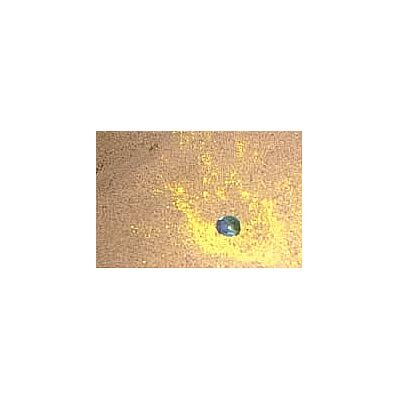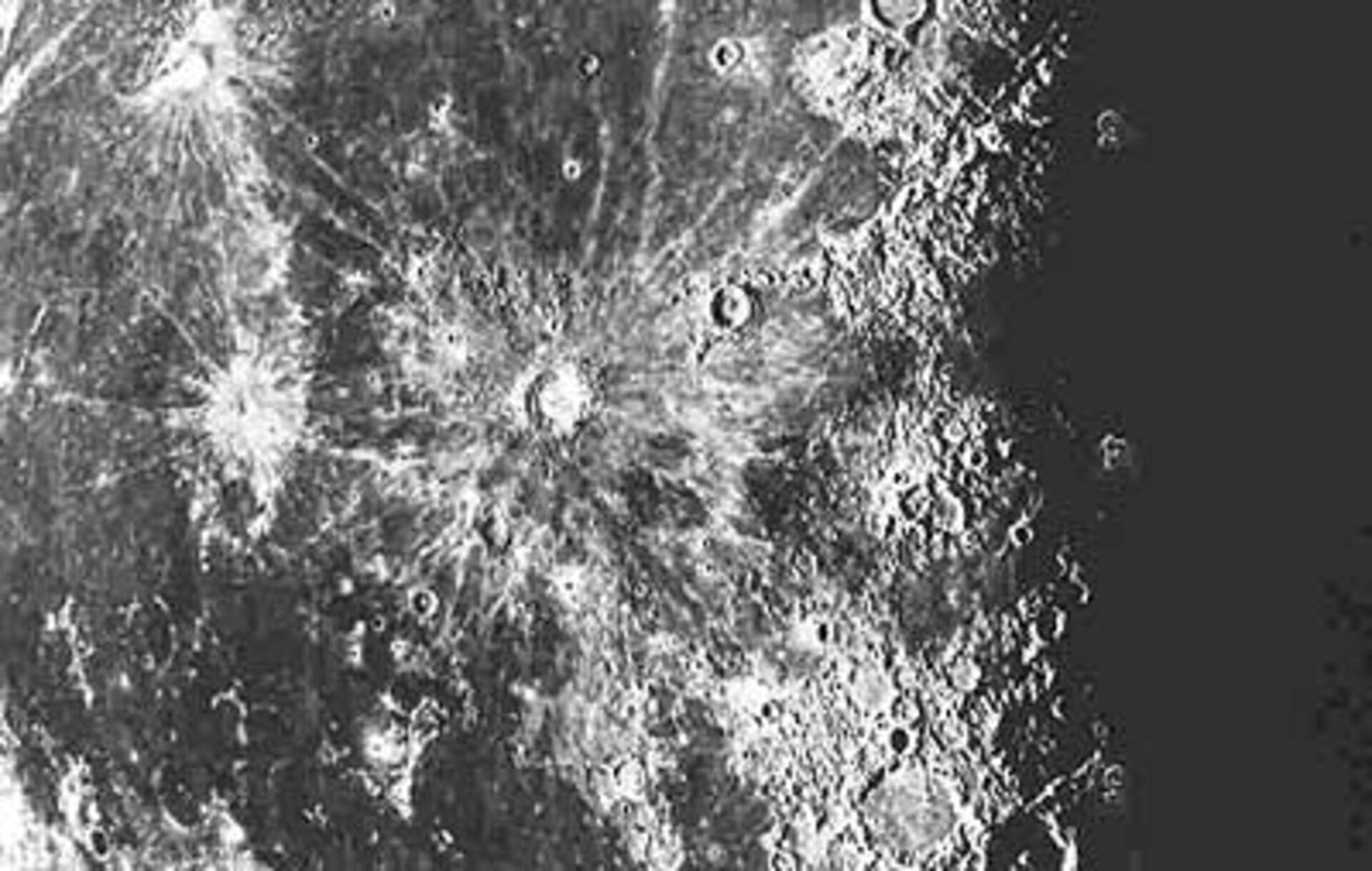Teaching Earth and Space 5-14: the Scottish experience
Author: Susan Burr
Organisation: Kyle Academy
Location: Scotland
In Scotland we teach Environmental Studies 5-14, that is from primary 1 (level A) to secondary 2 (level E/F). I have always been interested in the teaching of Earth and Space although this is not my specialist area. I feel that any problems I might have would also be experienced by my colleagues.
This work initially started when I worked for the Pupil Researcher Initiative. Although this project itself focused on pupils aged 14-16 I identified a need to provide materials and support for teachers of younger pupils. The work has continued through workshops run in conjunction with the Association for Science Education and my local education authority.
The investigations were initially developed as a science fair activity but have subsequently been used as a classroom activity.
Space enthuses pupils so that activities linked to a Space theme can make science in schools exciting and motivating. All pupils need to be interested in science, not just those whose future is to become a specialist scientist or science teacher. Science underpins all our life and work, so it is essential that the pupils of today, our future citizens, have a good understanding of science.
The course
The Environmental Studies 5-14 course covers three topics:
- Energy and Forces
- Living Things and the processes of life
- Earth and Space
Earth and Space in turn cover three areas: Earth in Space; Materials from Earth; Changing materials
In the Earth in Space section there are the following topics:
Earth in Space; developing an understanding of the position of the Earth in the Solar System and the Universe, the effects of its movement and that of the Moon
at Level A:
- identify the Sun, the Moon and the Stars
- link the pattern of day and night to the position of the Sun
at Level B:
- associate the seasons with differences in observed temperature
- describe how day and night are related to the spin of the Earth
at Level C:
- describe the solar system in terms of the Earth, Sun and other planets
- link the temperatures of the planets to their relative positions and atmospheres
at Level D:
- relate the movement of planets around the Sun to gravitational forces
- give some examples of the approaches taken to space exploration
at Level E:
- explain day, month and year in terms of the relative motion of the Sun, the Earth and the Moon
- describe the universe in terms of stars, galaxies and black holes
at level F:
- describe some of the ideas used to explain the origin and evolution of the Universe
In addition to developing knowledge and understanding, pupils develop a range of investigative skills. The skills fall into the following categories:
- Preparing for tasks: considering and understanding the nature of the task and planning what will be done including fair testing.
- Carrying out tasks: making and using appropriate observations and measurements, then recording findings in a variety of ways appropriate to the task
- Reviewing and reporting on tasks: describing and presenting the findings in appropriate forms and thinking critically about the significance of the findings
The course also emphasises the development of informed attitudes including a commitment to learning, respect and care for self and others and social and environmental responsibility.
The aim of this work has been to support my colleagues in the delivery of this course. In this context I have developed a number of resources.
- resource lists for teachers including relevant books, slides, websites
- teacher workshops based ASE book Earth and Beyond; and investigation
- investigative work for pupils, ‘Meteorites from Mars’
Resource list
Useful websites:
1. The Royal Observatory Edinburgh
http://www.roe.ac.uk/vc and http://www.roe.ac.uk/info/
cool links; educational links; solar system
2. PPARC [Particle Physics and Astronomy Research Council]
http://www.pparc.ac.uk/Ed/school.asp
Image bank; publications; screen savers
Pupil Researcher Initiative http://www.shu.ac.uk/pri
3. Armagh Planetarium
http://www.armagh-planetarium.co.uk
slide; videos; buy on line.
4. Association for Science Education
http://www.ase.org.uk
bookshop; Earth and Beyond, science images
5. NASA
Join the teachers mailing list from Craig Tupper
dtupper@hq.nasa.go.
To subscribe send blank email to
oss-update-subscribe@yahoogroups.com.
6. European Space Agency
http://www.esa.int
7. Using sites which have 'packaged' a range of internet resources
NASA has a vast array of resources available, you can trawl through them yourself, there is everything from microgravity research to pictures of the sun. The following are two ways this wide range of materials have been put together. NASA’s own Origins program and Windows on the Universe.
7a. Windows to the Universe
This project provides an interdisciplinary website using some of NASA’s materials plus other sources. http://www.windows.ucar.edu
An excellent site and well worth tying out
- Available at three levels: lower primary, upper primary/lower secondary, upper secondary
- The group aims to make the information attractive, accessible and interesting
- Connections between science and the humanities are highlighted
- Mythology section, art books and films
- People section gives contributions of scientists and philosophers
- Kids space with games and FAQs
- Teacher resources including CD with images
- Exploratours, directed rather than browse, Life on Earth, Mars, Life in the Solar system
- Space weather, collaboration with scientists, looking at current conditions in space, space storms, how Earth’s weather is affected
- Interactive elements , games, ask a scientist, search facility
- Workbook facility, lasts 9 days but stays on site if activated within 9 days
7b. Integrating Hubble Space Telescope and NASA materials into the classroom; Origins programme
Part of NASA’s education program studying the long chain of events from the birth of the Universe http://origins.stsci.edu
- range of materials available including downloads, also available by post, pictures (lithographs) and posters
- interactive activities, primary already done, secondary materials in production
- teachers and scientists working together to produce materials
- discussion forums; Starchild and Imagine the Universe
8. http://education.nasa.gov/
Get an overview of NASA's Education Programme; find out more about online resources for teachers, and how to access NASA's educational materials and services.
9. http://amazing-space.stsci.edu
"Amazing Space" is a set of web-based interactive activities primarily designed for classroom use, but made available for all to enjoy. All lessons include spectacular images taken by the Hubble Space Telescope and extensive Teacher Pages.
10. http://sse.jpl.nasa.gov
Activities, pictures, factsheets, models, slides etc of the Solar System
11. http://astrobio.terc.edu/
A high school course in which students use an inquiry-based, interdisciplinary approach to explore astrobiology. Topics in chemistry, biology, Earth and space science, physics, and engineering are learned and applied.
12. http://spacelink.nasa.gov/index.html
Aeronautics and space resources for education
13. http://spacescience.nasa.gov
NASA's Office of Space Science (OSS) seeks to solve mysteries of the Universe, explore the solar system, and discover planets around other stars and search for life beyond Earth. Also included is a free e-mailing list service which sends information each week
14. http://stardust.jpl.nasa.gov
This site offers a "nuts-and-bolts” introduction to comets and the Stardust spacecraft for teachers, parents, and interested students.
15. http://tie.jpl.nasa.gov/tie/index.html
The Telescopes in Education (TIE) program brings the opportunity to use a remotely controlled telescope and charge-coupled device (CCD) camera in a real-time, hands-on, interactive environment to students around the world
16. http://pumas.jpl.nasa.gov
PUMAS practical uses of Math and Science, online journal, linked site: National Space Biomedical Research Institute: http://www.nsbri.org From Outerspace to Innerspace, the effects of space on the body, topics include balance, bones, cancer and radiation, heart and circulation, immune system, muscles sleep and work
17. Hands-On Universe
http://hou.lbl.gov/ provides programmes for pupils and teachers, curriculum materials, image processing software, access to telescopes
18. Challenger Center
http://challenger.org
- Founded by the families of the Challenger Space Shuttle crew they aim to inspire young people to learn and to explore.
- Examples Cosmic EdVentures Exploring Earth’s Neighbourhood, upper primary, study of the solar system.
- Lesson launchers for some of the most popular NASA activities
- Lots of materials on line but this is also linked to the Challenger centre in Leicester offering visits to pupils
Teacher workshops
Aims of the workshops
- to increase teachers’ knowledge about Earth and Space
- to provide a range of materials and activities for classroom
- to provide information about resources
- to provide possible investigations
- to provide time for discussion of the course and its implications
Topics included:
Solar system
Day and night
Shadows and time
The year and seasons
The moon
Investigations
Investigations

Meteorites from Mars was specifically designed for use with P6/7 and S1/2 pupils as a science fair activity and then developed as a classroom activity to fulfil the 5-14 investigative skills objectives.
Meteorites from Mars?
Research into meteorites and their impact on Earth Class investigation or science fair activity
Aims:
- Working as a team
- Investigation of the effect of objects hitting the earth
- Developing investigative skills of planning, experimenting and reporting
- Preparing a Poster presentation
Team work
Planning and allocation of responsibility
- Team leader: overall responsibility
- Recorder: writing down the results
- Presenter: putting the poster together
- Experimenter: organising the experiments
Investigation
Investigating the factors that affect the size, type and pattern of craters made on earth when objects from space hit the Earth
- Distance (height from which object dropped) and mass of objects
- Formation of Ejecta patterns
Making craters
Using a large tray of dry sand, marbles for distance/height; more difficult to change mass but keep everything else the same!
Ejecta patterns
Need small container; deep layer of sand, paint powder layer, thin layer of sand, drop your marble in and look at the patterns formed.
Poster presentation:
- Good title needed
- What you did? What you found out?
- Include information about meteorites, the craters they make, how often they might hit earth, where they might come from
Information Table:
books, internet access, CDs, pictures,
Explainers:
Adult helpers teachers and students
More to do:
Making the link between investigation and the real thing, looking at the evidence, speculating!
Websites:
Meteorites from Antarctica, Life on Mars?
http://www-curator.jsc.nasa.gov
Impact craters
http://www.solarviews.com/eng/tercrate.htm
References
5-14 Environmental Studies Guidelines Learning and Teaching Scotland (ISBN 1859557023)
Level A/B Worksheets Joy Snape, Adviser, Borders Regional Council
Earth and Beyond Worksheets The Association for Science Education and the Association for Astronomy Education (ISBN 0863572715)
Pupil Research Briefs Pupil Researcher Initiative (ISBN 0863396496)


